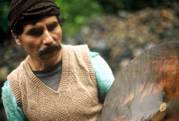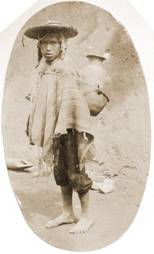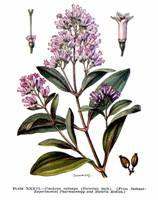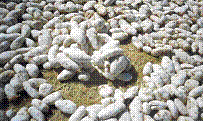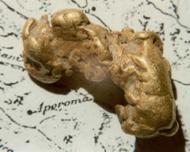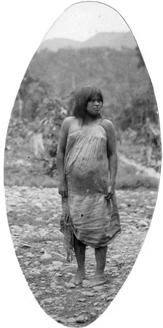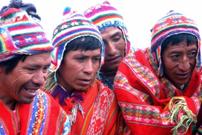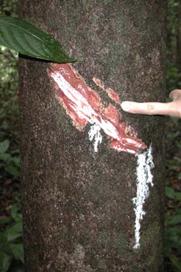Glossary of Peruvian Terms
From Spanish and native languages
Balsa |
Boats made out of reeds. Commonly used on |
|
Batea |
Wooden bowl for panning gold. |
|
Ceja de la Selva |
(High Jungle or mountain rim — literally “eyebrow of the jungle”) refers to the area between 1,000 and 9,000 ft on the eastern slopes of the Cordillera. |
|
Chacra del oro |
Literally a “gold farm” or a small plot exploited to extract gold. |
|
Cured meat of alpaca or lamb. Its origins are not well known but it is presumed that this practice comes from Inca Empire. This is a common dish in the regions of Puno, |
|
|
Chicha |
A fermented, beer-like drink made in the |
|
Chichona |
"Quinine Bark" is one of the rainforest's most famous plants. Legends say that the name cinchona comes from the Countess of Chinchon, the wife of a viceroy of |
|
Chuño |
Freeze-dried potatoes. Ancient Andeans were the first to develop freeze-drying. In order to remove toxins from potatoes, they made a product called chuño. In making chuño, potatoes were first spread on the ground so they would freeze overnight. In the morning, while the potatoes were still frozen, they were stomped under foot. The resulting pulp was dried by day in the Andean sun beneath a layer of straw. This process was repeated daily for two weeks. The freezing and stomping caused the cell walls of the potato to burst, destroying the epidermis of the tuber, resulting in a food product high in carbohydrates, and low in protein, vitamins, minerals, and glycoalkaloid a substance that causes a bitterness in potatoes. Chuño was used in stews or eaten like bread and can be stored for up to ten years. It is still eaten in areas of |
|
Coca |
(Quechua) A plant whose leaves contain a natural stimulant. In the |
|
Cordillera |
The peaks of the |
|
Gold |
In 1558 a gold rush began to the Carabaya after it was discovered by a group of free blacks and mulattos at a place called Inahuaya. The gold rush to the upper Tambopata did not last long. The town of In 1896, the |
|
Montaña |
The tropical rainforest East of the Andean Cordillera. |
|
Native People |
(Ese Exa, Tiatinagua, Tambopata-Guarayo, Huarayo, Ese Eja, "Chama", Ese'ejja) 250 to 400 in "Chama" is a derogatory name. (Member of the Tacanan | Tiatinagua linguistic family) The Ese'eja ethnic group belongs to the Tacana language family and has traditionally inhabited the Tambopata, Heath, Tacana The collective designation for a group of tribes constituting the Tacanan linguistic stock in different dialects, occupying the upper valleys of the Beni and Madre de Dios Rivers, on the eastern slope of the Andes, Department of Beni, north-western Bolivia. The group includes: the Tacana proper, the Isiamo, the Cavina, and the Aten or Leco, all missionized by the Franciscan Fathers of the Chuncho (Quechua) Inka name for Amazonian peoples. |
|
Quechua |
(or Quichua) The name of the native people whose leader was called the Inca (or Inka). It is also the name of the language spoken by most of Inka (Quechua) The empire built by a group of Quechua-speaking Andeans in the 14th and 15th centuries that stretched from See also Quechua |
|
Rubber |
The most important latex-producing plants are the tree Hevea brasiliensis of the spurge family, and other species in the same genus, which were the sources of the original South American rubber, the commercially important Para rubber. In 1743 a French scientist, La Condamine, was the first to use rubber to waterproof his instruments, and it was then added to the end of pencils. Wider use was limited due to its properties of getting hard and brittle when cold, and sticky when hot. In 1839 Charles Goodyear discovered the process of vulcanization of rubber by heating rubber with sulphur, making it tough and elastic in any weather. Followed shortly by Dunlop’s invention of the pneumatic tire a huge demand was created for rubber, almost overnight. The rubber boom in The road allowed rubber to begin flowing out of |
|
Tambo |
Guest house |

